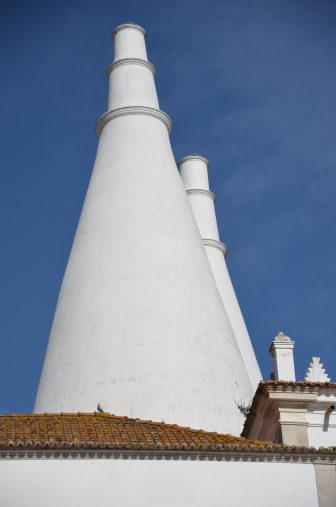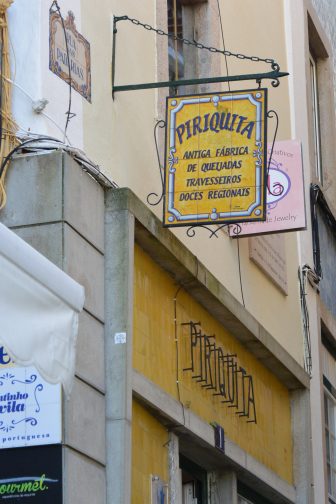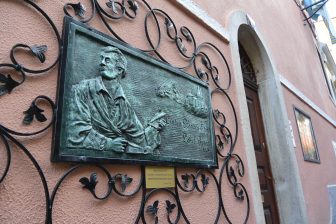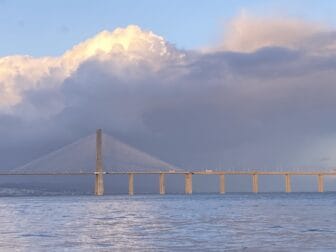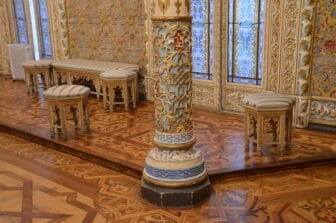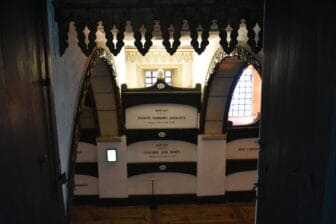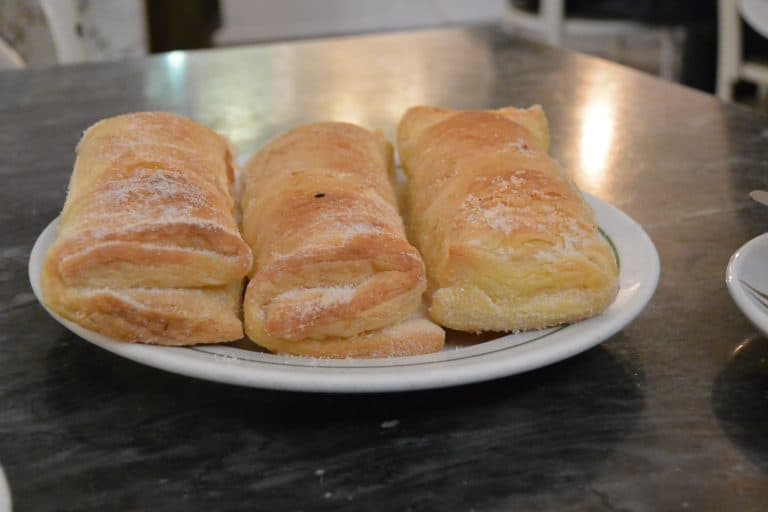
[ Feb.2019 ] On the second day in Lisbon in Portugal, we had a private tour to Sintra, which we had booked before coming to the country.
Sintra 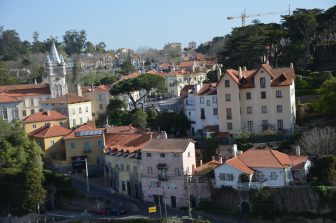 is about 30km northwest of Lisbon and it is a UNESCO World Heritage Site.
is about 30km northwest of Lisbon and it is a UNESCO World Heritage Site.
The royal family had their summer palace here.
Our guide was a young man of 30 years old called Jasper.
He did not look Portuguese and spoke very good American English, so I thought he was an American, but in fact he was Dutch, from Delft.
Because his fiancé is Portuguese, he lives here and runs a sightseeing tour company.
According to him, Sintra became an important place because of Ferdinand II, who was the German husband of Queen Maria in the 19th century.
Jasper said “The people in the south of Europe talk a lot but do not do much, while the northern Europeans do not talk much but they actually do things”.
He then said “The German royal families were very good at expanding their power through marriage”.
This Ferdinand was an eccentric and artistic person and the palace he created on top of the mountain, called Pena Palace, is colourful.
The aristocrats started coming here to have properties surrounding this palace, so apparently, even now, the properties in Sintra are the most expensive in the country.
The higher you go up the hill, the higher the price is, too.
Ferdinand also made some botanical gardens, collecting all sorts of seeds from all over the world.
Our tour originally included visiting this palace as well as the ruin of the castle, which is even older, built by Moors.
However, because of my husband’s leg injury, we had to stay in the old town below them.
There was another palace, Sintra National Palace, in the town with interestingly shaped chimneys but we did not go in and just looked at it from outside.
Jasper took us to a cake shop instead, established in 1862, called Piriquita.
Sintra must have been lively as a place for social gatherings for many aristocrats families in those days.
It was a bright shop with pastel coloured interiors and it seemed one of the highlights in Sintra, as the shop was full of people.
Portuguese people are famous for their sweet tooth and according to Jasper, each place has got their own proud cake.
The most famous one is the egg tart, Pastel de Nata, which is so popular that there are specialised shops even in London.
Jasper said “When you are in Sintra, you have to try Travessario da Piriquita”, so we did.
It was a rich cake with a crispy pie and the almond cream, which was very nice and tasty but quite large, so eating one made me really full.
We had a walk to help our digestion, but the town of Sintra had many staircases so it was hard for my husband to walk around.
On the way, there was a house with the name of Lord Byron, the English poet.
Apparently, he lived here and he was even the mayor of this town briefly.
He described Sintra as “the Garden of Eden of this world”.
We sometimes come across Byron’s name during our travelling when we are not expecting it.
Jasper explained the history of Portugal, including some of the things we did not know.
Portugal was under the rule of the Moors for a long time, like the neighbouring country, Spain, and the architecture had a lot of Islamic influences, including the famous tiles, Azulejo.
However, the Reconquista was achieved much earlier in Portugal than in Spain, as most of the country was out of Islamic rule in the 12th century.
The exception was the Algarve, the most southern area, which became Christian in the 13th century, while Spain’s Reconquista ended in 1492.
Another thing I learned was something much more recent.
When Portugal was under the rule of the dictator, Salazar, it managed not to get involved in WW2 and stayed neutral.
To maintain their neutrality, they had to provide their minerals to Nazi Germany very cheaply, apparently.
After walking in the town, we moved to the edge of the old town to a small market.
They were selling good looking cheeses and strawberries.
After that, we went to some spots where we could get a good view of Pena Palace and the Castle and that was the end of our visit to Sintra.
We have to come back here to enter the palaces and to visit the castle.

